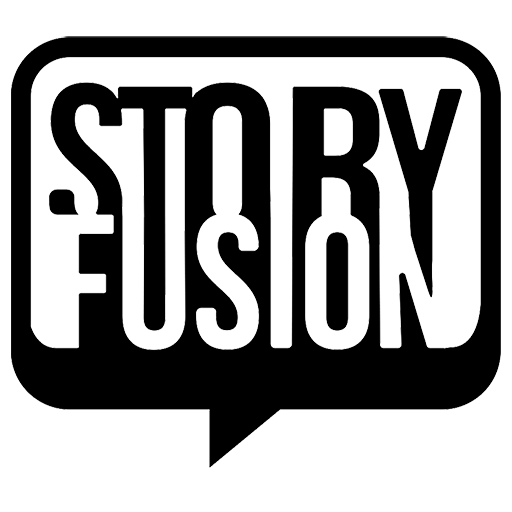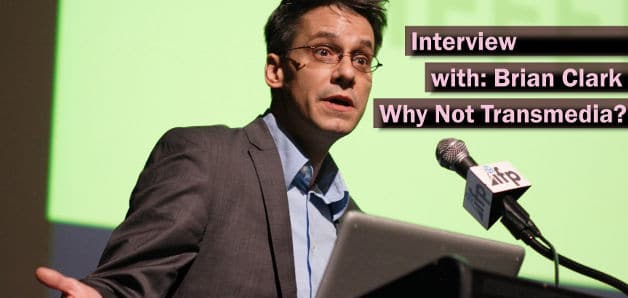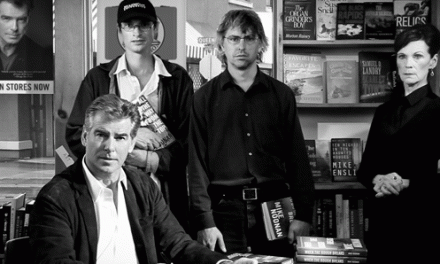For our interview with Brian Clark of GMD Studios we slightly reworded our interview questions to “Why Not Transmedia”?
Not only since the early days of 1994 Brian Clark is working on various experiments in the field of storytelling and experience design. He is one of the creative heads, CEO and Partner of the GMD Studios and he was involved in big successes like Art Of The Heist, Benjamin Stove, B Seeing U and other things that we still talk about as if they just happened some days ago.
Due to the many people that suddenly claim to be experts on the field of Transmedia, he brings up another point of view to the slightly overheated discussion that is going on in the US about what transmedia is and what it is not. After bringing up to articles on Facebook to show his opinion on this discussion, he was invited by J. C. Hutchins and Steve Peters to discuss his opinion “Transmedia is a lie” in their StoryForward Podcast. Make sure to take the time and listen to it, because it includes a lot of insights on the history of transmedia, too.
Brian is also on Facebook and Twitter, if you want to connect to him.
As CEO and Partner at GMD Studios doing experience design… why not transmedia?
People shouldn’t change what they are making and the experiments they are engaged in: as a community, we really ARE all talking about the same trend, we just continue to struggle when we talk to each other about it. The question that nags me, as a practitioner, is whether “transmedia” as a term is really bringing anything to the dialog that “multimedia” didn’t already describe. Initially, “transmedia” was used as an adjective with a concrete noun – “this is transmedia theater,” “I’m writing a transmedia novel,” “the album had transmedia extensions.”
The more transmedia has gotten coupled with less specific nouns – like transmedia storytelling, transmedia producer, transmedia activism – the less it has illuminated and the more it has obscured. Some have argued that’s because all of life is transmedia, everything is transmedia … but how useful is a term to us as practitioners if it describes anything?
Personally, I’ve always thought of myself as an experience designer, so “transmedia” always felt like a new label for a portion of my prior work (those that relied more on mediated experiences than unmediated experiences)
Some have argued that’s because all of life is transmedia, everything is transmedia … but how useful is a term to us as practitioners if it describes anything?
– Brian Clark
in the same way that “alternate reality gaming” was applied only to a portion (those that had more explicit, rather than implicit, gameplay). So the term “transmedia” isn’t really a part of our internal design language, and I’m not convinced it is the umbrella concept. We’re far more likely to be talking about “chained engagement” because we think an object (like a film) exists only as part of an experience (like the theater it is showing in) and the longer the chain, the more impactful each piece of the chain is for that audience member.
What’s driving the sudden activity and buzz around “transmedia”?
I think we’re having slightly different conversations in the US and Europe. In Europe (and Canada), “transmedia” is starting to cement institutional roots, and institutional roots are more than happy to envision comprehensive mandates and broad definitions. In the US, it is becoming so over-used as a buzz phrase (by big companies and indie practitioners alike) that even my colleagues have lamented they don’t know what the word means (L.A. Times “Fourth Wall“) or railed against people calling themselves an expert just because they read about it on the Internet (Jeff Gomez, Forbes: “With Prometheus Ridley Scott perfects what Mass Effect 3 missed”) in major press interviews.
In general, though, I think these kinds of terms always have natural useful lifespans: in the twenty years I’ve been doing this kind of work, I’ve seen a lot of terms come into vogue and then either wither way to obscurity or expand so broadly they no longer mean anything useful. We’ll be a more healthy movement for engaging in discussions about why we’re using one term over another, and what assumptions are packed inside it – phrases like transmedia (or convergence, or multi-platform, or spreadable) reveal something about how you think about the work you’re making and bring different meanings. Even older media still bear the marks of the language debates of earlier days – it is film, cinema, motion pictures, or movies?
Can you think of any examples of content, either mainstream or niche, that are great case studies for how things should play out?
[lightbox full=”https://tmsb.de/wp-content/uploads/2012/05/GMD-Studios-Building-Experiences-Together.png” title=”GMD Studios”] [/lightbox]I don’t think there’s any one way it should play out, any more than the Web, television or publishing should only play out one way. I’m far more fascinated by how many different ways it will play out simultaneously (and what the “rules of great design” are across those disciplines might be.) Because we’re in this phase of massive experimentation, I think there’s a lot more to learn by watching for the notable failures – especially anyone who finds an innovative new way to fail. For example, I’ve been thinking a lot about “multi-platform television” or “social television” metaphors recently because US broadcasters desperately want to crack that nut – and yet I can’t really find any great examples that really do seem to enhance watching a show live. Some tablet social viewing apps, for example, are rather spectacular failures and thus worth experiencing and talking about as designers. Consume as much of your peers’ work as you possibly can!
[/lightbox]I don’t think there’s any one way it should play out, any more than the Web, television or publishing should only play out one way. I’m far more fascinated by how many different ways it will play out simultaneously (and what the “rules of great design” are across those disciplines might be.) Because we’re in this phase of massive experimentation, I think there’s a lot more to learn by watching for the notable failures – especially anyone who finds an innovative new way to fail. For example, I’ve been thinking a lot about “multi-platform television” or “social television” metaphors recently because US broadcasters desperately want to crack that nut – and yet I can’t really find any great examples that really do seem to enhance watching a show live. Some tablet social viewing apps, for example, are rather spectacular failures and thus worth experiencing and talking about as designers. Consume as much of your peers’ work as you possibly can!
Do you think that only Hollywood and big networks are able to realize “cool” transmedia projects? What does it need to accomplish great projects?
I think just the opposite. Hollywood and big companies do have big budgets, and big budgets are fun to play with, but those dollars are still really being spent to market something else (and “transmedia marketing” is just a fancy phrase for “integrated marketing” which is what they have always done with those big piles of money.) The bigger the budgets, the more risk adverse the capital becomes. Meanwhile, independent creators frequently have to make do with smaller budgets but, surprisingly, fewer limits on what they can accomplish.
If you think only big companies can make this happen, you only need to compare Fourth Wall’s RIDES platform – which is the work of a full-time company with significant venture funding – with the kinds of projects that came out of the StoryHack here in NYC, made by small teams in 36 sleepless hours. Arguably, the most interesting and successful projects will start in that chaotic independent lower-budget freedom and then benefit from what the big networks cando to reach audiences: “The Blair Witch Project” probably remains, more than a decade later, the best example of that kind of model.
Arguably, the most interesting and successful projects will start in that chaotic independent lower-budget freedom and then benefit from what the big networks can do to reach audiences.
– Brian Clark
What do you wish for your own/others upcoming transmedia projects?
As a community, we have to get over our collective imposter syndrome and let go of the idea that our work should always be free, just because we’re afraid we’ll have a smaller audience because of that. When a film studio green lights or acquires a film, that’s because they are making a bet that an audience will pay to see the work. That’s the basics of most media businesses — from publishing to music to games to Broadway theater – because that’s the basics of how capital works. Yet, even though as a community we’re fearless about playing across all those platforms that have viable business models, we continue to not treat business and capital as just more platforms that we have permission to experiment with. It is an embarrassment of riches that we’re largely ignoring.
What is the transmedia scene in your country like?
The US is a big place, so we have multiple transmedia scenes brewing in different cities with slightly different flavors. Here in New York City, it is a pretty thriving community that bridges the arts, publishing, tech and advertising. Much of the energy surrounds the new not-for-profit organization StoryCode that holds events each month at the Lincoln Center and is growing faster than almost any room we put it in. If you had to describe what makes the NYC transmedia scene unique, I’d point out three elements. First, there are a surprising number of theater and experimental theater practitioners in the community, and performance thinkers have been under-represented in the dialog of creators to date. Second, NYC remains a thriving place for technology start-ups, so in a place like this it really is possible for this to be as much of a technology movement as a media movement. And third, we’re getting increasing levels of support from the arts community in the city because the community is perceived as being the latest wave in the avant garde that they’ve been supporting since Andy Warhol.
[divider]
Thank you very much Brian for taking the time and sharing your perspective on this trending discussion with us.,
Photo-Source: This articles feature photo was taken from Brian Clark’s Facebook photos. It was taken at Power to the Pixel in New York 2011, where he was giving a speach.







Recent Comments